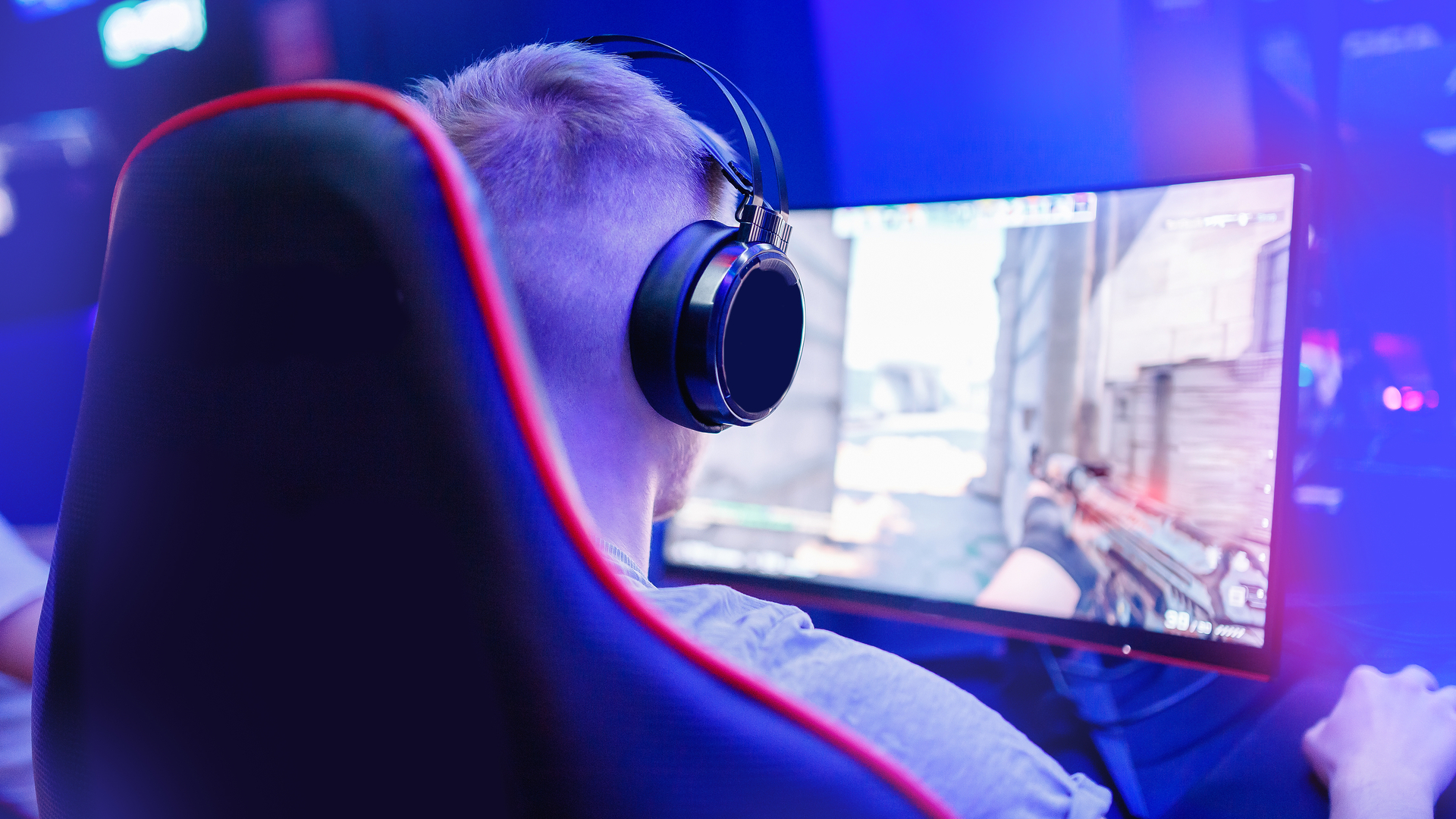Are refresh rates really that important?
Framerate fodder

Stepping into today’s world of computer monitors is a somewhat terrifying prospect, one that applies even more severely to PC gamers. While most console owners are content to just plug their gaming machine of choice into the TV they already have set up in their home, a monitor is a separate and necessary addition to any PC setup.
Among the many daunting stats of gaming monitors (what in the hell is a smart contrast ratio, we hear you cry) lies the refresh rate. Sometimes also referred to as a display frequency, this is a topic of hot debate among the PC gaming community.
But is a higher refresh rate really better? For PC Gaming Week 2020, we take a look.

What's the refresh rate?
First, we’ll talk about what refresh rates really mean. In simple terms, the refresh rate of your monitor is the number of distinct frames the monitor can display within a single second, measured in Hz. This should not be confused with framerate, which is the number of frames per second your PC can send to the monitor.
Essentially, the refresh rate of your monitor determines the maximum framerate you’ll actually get to see. If your system can hit 90fps in a game but your monitor is only capable of 60Hz, the gameplay on your screen will only be running at 60fps. In other words, the better your gaming PC, the higher the refresh rate you’ll want. Games running at a higher framerate should demonstrate a sharper picture with less blurred motion.
Let’s take a look at our performance baseline. A basic monitor nowadays rocks a 60Hz refresh rate and 1080p resolution, otherwise known as Full HD. So, 60Hz is more than enough for playing on a low-end system, as you’re unlikely to hit 60 frames per second running games at 1080p.
If your gaming PC is a budget build or simply an older machine, a bog-standard 60Hz monitor should work just fine. It’s worth mentioning right now that if you’re not a gamer, you don’t really need to worry about refresh rate at all, since most entertainment media is set at 24fps or 30fps.
Sign up for breaking news, reviews, opinion, top tech deals, and more.
In fact, buying an expensive 300Hz monitor when you’ve only got a GPU capable of pushing 60 frames per second to the display is a bad idea. Unlike a TV, which can utilise image processors to artificially adjust video input and improve stability, a monitor that runs at 300Hz provides no benefit whatsoever to your picture quality if your system can’t match up to that refresh rate.

Powerful PCs
The opposite is true as well. As gaming PCs have improved, so have gaming monitors. These days, 120Hz or 144Hz is considered standard fare by many within the PC gaming community, as there are now plenty of computers out there that are comfortably capable of outputting video in excess of 100fps.
If you’re rocking a powered-up gaming rig that eats 1080p gameplay for breakfast with monstrous 200fps+ framerates, sticking to a monitor with a lower refresh rate could cause you problems. Screen tearing is an issue that occurs when a monitor receives too many frames from the video card, resulting in multiple frames appearing on screen at once. This manifests as a horizontal divide on the screen, frustrating even for the least concerned viewer.
So, 120Hz to 144Hz is a great place to be if you’ve got a mid-range or better gaming PC. Higher refresh rates do lead to diminishing returns, so while 240Hz and 300Hz monitors are now becoming an option they won’t necessarily be the best choice. If you’ve got average vision, the difference between 60Hz and 144Hz will be much more noticeable than the difference between 144Hz and 240Hz.
Super-high refresh rates are more valuable to gamers who enjoy fast-paced esports titles. Twitch shooters like Riot Games’ recent breakout success Valorant can benefit from a 300Hz refresh rate since such games utilize more simplistic graphics and superior optimization to run at elevated framerates.
Many professional gamers will attest that a higher refresh rate helps improve reaction times and situational awareness in games.

Other features
So if you’re a budding Counter-Strike or Overwatch streamer, and you’ve got the PC to back it up, a newer high-refresh-rate screen might be a good pick. However, even in this case, there are other aspects to consider when buying a screen. A 240Hz refresh rate won’t help you if the monitor in question has a lower input response rate than you’re used to - that’s the delay between the monitor receiving input from your PC and changing any relevant pixel accordingly. Unlike refresh rates, a lower response time is always better.
Response rate is affected somewhat by refresh rate, but not directly. The response time dictates the maximum possible refresh rate of the monitor; for example, a 144Hz display must have a response rate of 6.95 milliseconds or less, since that’s the speed needed to cram a hundred and forty-four frames into a single second.
But you may see a 120Hz monitor with a 1ms response rate next to a 144Hz monitor with a 5ms response rate. Although the second screen has a higher refresh rate, the significantly lower response rate of the first monitor means that it will do more to reduce input latency. Generally speaking though, 5ms or below is a safe bet.
Resolution is also an important thing to consider. As resolution is increased, framerates drop; if your PC can hit 100fps at 1080p, it won’t get anywhere close to that figure running the same game in 4K. If you intend to game in 4K, you might not need to splash out on a display with a higher refresh rate.
You may find yourself having to choose between a higher resolution or a higher refresh rate. This is a common predicament when it comes to gaming monitors; both elements raise the price of the product, so it’s not uncommon to see a 1080p 144Hz panel sitting in the same price bracket at a 4K 60Hz equivalent.
In this situation, you simply have to consider what games you play. Obviously there’s the straightforward answers: if you exclusively play single-player RPGs set in big, gloriously detailed worlds, then resolution comes first (provided your system can handle it). But there’s more nuanced scenarios, too.

Which is best?
Apex Legends is a battle royale shooter from the creators of the Titanfall series, which pits twenty squads of three players each against one another across a huge map that acts as a backdrop for both looting and shooting. Working to reduce input lag caused by your monitor might make a small difference to your aim, but Apex isn’t a game where a single snap-reaction shot decides victory.
Bullets fly slower and players have more health, so Apex is a game with more measured gunplay than a twitch shooter like Valorant. Pumping up the resolution makes it easier to identify rare items from afar, or spot a sniper waiting for your squad to enter her kill zone.
This is just one example, of course, but it illustrates the point well: don’t get too hung up on super-fast refresh rates if you don’t play the small handful of games where they really matter.
This particular writer uses a 1440p AOC monitor with a refresh rate of 144Hz. I like to call it the best of both worlds: I get the QHD quality, but there’s no way my ageing home PC can pump out more than 144 frames per second at that resolution in any of the games I play, so going any higher would’ve been a waste of money. Keep that in mind the next time you’re on the lookout for a new gaming monitor!
TechRadar’s PC Gaming Week 2020 is celebrating the most powerful gaming platform on Earth with articles, interviews and essential buying guides that showcase how diverse, imaginative, and remarkable PC games – and gamers – can be. Visit our PC Gaming Week 2020 page to see all our coverage in one place.
- These are the best gaming monitors money can buy

Christian is TechRadar’s UK-based Computing Editor. He came to us from Maximum PC magazine, where he fell in love with computer hardware and building PCs. He was a regular fixture amongst our freelance review team before making the jump to TechRadar, and can usually be found drooling over the latest high-end graphics card or gaming laptop before looking at his bank account balance and crying.
Christian is a keen campaigner for LGBTQ+ rights and the owner of a charming rescue dog named Lucy, having adopted her after he beat cancer in 2021. She keeps him fit and healthy through a combination of face-licking and long walks, and only occasionally barks at him to demand treats when he’s trying to work from home.